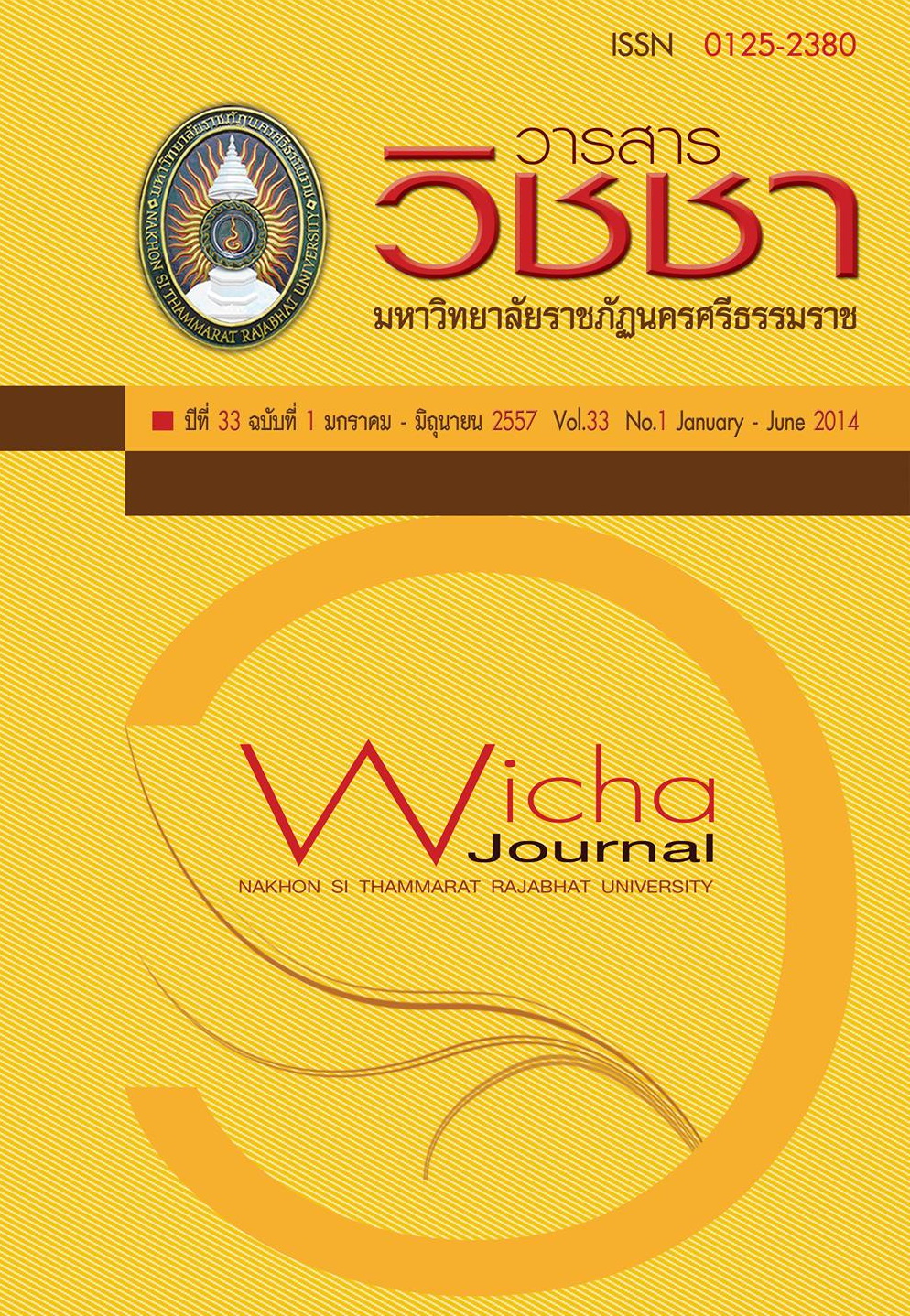การใช้ประโยชน์จากสาหร่ายผมนางเพื่อเป็นอาหารสำหรับการเลี้ยงปลานิล
Main Article Content
บทคัดย่อ
Utilization from Gracilaria fisheri for Feed Nile Tilapia (Oreochromis niloticus)
Seven experimental diets containing various levels of Gracilaria fisheri mill prepared as follow; formula 1, 0 % Gracilaria fisheri mill, formula 2, 5% Gracilaria fisheri mill, formula 3, 10% Gracilaria fisheri mill, formula 4, 15% Gracilaria fisheri mill, formula 5, 20% Gracilaria fisheri mill, formula 6, 25% Gracilaria fisheri mill and formula 7, 30% Gracilaria fisheri mill. The proximate analysis of the chemical composition of the test diets in formula 1-7 were 30.06%, 30.42%, 30.02%, 30.46%, 30.09%, 30.85% and 30.29% of crude protein and 7.93%, 7.04%, 7.14%, 7.75%, 7.14%, 7.29% and 7.05% of the lipids respectively. Each formula had same 3,200 Digestibility Energy Kilocalory/feed 1 Kg. Each test diet were fed to each group of sex-reversed Nile tilapia (Oreochromis niloticus), At the average weight of 5.11–5.22 g/individual. Each of the feeding trial was performed by controlled condition for 12 weeks periods. The results showed that : during two periods, 0-4 weeks, Average weight of Nile tilapia was decrease by the levels of dietary Gracilaria fisheri mill. The average weigh of the fish received 10% Gracilaria fisheri mill (formular 3) was not significantly different from the fish fed with referenced feed. And during 6-12 weeks, The average weigh of the fish received 25% Gracilaria fisheri mill (formular 6) was not significantly different from the fish fed with referenced feed. Increasing of Gracilaria fisheri mill were not effected to the growth of Nile Tilapia. The carcass protein and lipid content was not significantly different from the reference fish. The results concluded that the growth performance FCR, PER and ANPU of the fed test diet contains 10% Gracilaria fisheri mill in the age 0-4 weeks and 25% Gracilaria fisheri mill in the age 6-12 weeks were not significantly different to the fish received referenced feed.Article Details
เนื้อหาและข้อมูลในบทความที่ลงตีพิมพ์ในวารสารวิชชา มหาวิทยาลัยราชภัฏนครศรีธรรมราช ถือเป็นข้อคิดเห็นและความรับผิดชอบของผู้เขียนบทความโดยตรง ซึ่งกองบรรณาธิการวารสารไม่จำเป็นต้องเห็นด้วยหรือร่วมรับผิดชอบใด ๆ
บทความ ข้อมูล เนื้อหา รูปภาพ ฯลฯ ที่ได้รับการตีพิมพ์ในวารสารวิชชา มหาวิทยาลัยราชภัฏนครศรีธรรมราช ถือเป็นลิขสิทธ์ของวารสารวิชชา มหาวิทยาลัยราชภัฏนครศรีธรรมราช หากบุคคลหรือหน่วยงานใดต้องการนำข้อมูลทั้งหมดหรือส่วนหนึ่งส่วนใดไปเผยแพร่ต่อหรือเพื่อการกระทำการใด ๆ จะต้องได้รับอนุญาตเป็นลายลักษณ์อักษรจากวารสารวิชชา มหาวิทยาลัยราชภัฏนครศรีธรรมราชก่อนเท่านั้น
The content and information in the article published in Wichcha journal Nakhon Si Thammarat Rajabhat University, It is the opinion and responsibility of the author of the article. The editorial journals do not need to agree. Or share any responsibility.


